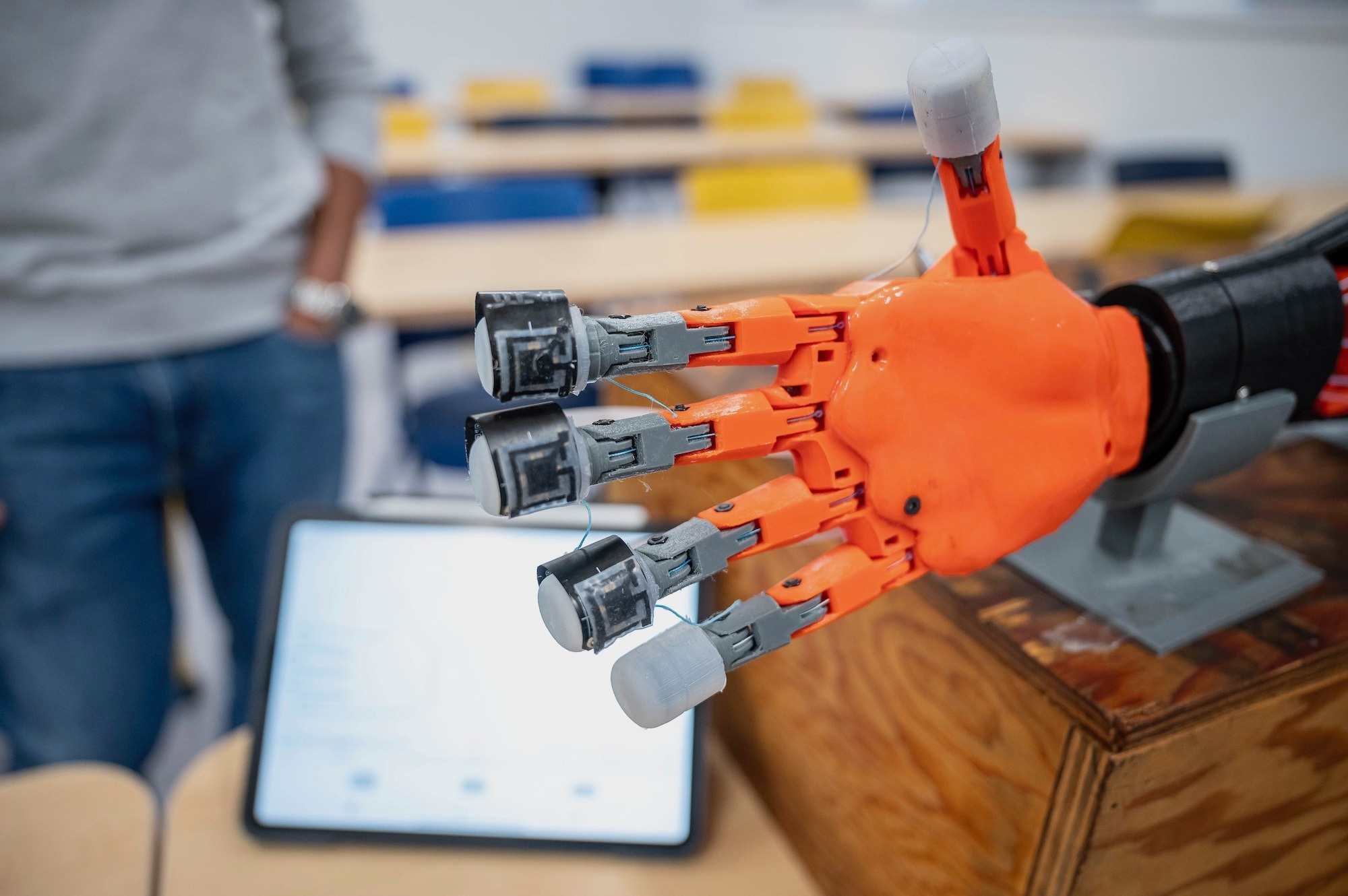Researchers from Honda and the University of British Columbia (UBC) have created a novel soft sensor that is smart, flexible, and extremely sensitive. This sensor has a plethora of uses in robotics and prosthetics.
 UBC engineers created the sensor in collaboration with Frontier Robotics, Honda’s research institute. Image Credit: UBC Applied Science/Paul Joseph
UBC engineers created the sensor in collaboration with Frontier Robotics, Honda’s research institute. Image Credit: UBC Applied Science/Paul Joseph
Applying sensor skin to the surface of a robotic limb or prosthetic arm allows for touch sensitivity and dexterity, facilitating tasks like picking up a piece of soft fruit that can be challenging for machines. Additionally, the sensor is tactilely soft, akin to human skin, which contributes to the safety and realism of human interactions.
Our sensor can sense several types of forces, allowing a prosthetic or robotic arm to respond to tactile stimuli with dexterity and precision. For instance, the arm can hold fragile objects like an egg or a glass of water without crushing or dropping them.
Dr. Mirza Saquib Sarwar, Study Author and PhD Student, Faculty of Applied Science, University of British Columbia
Giving Machines a Sense of Touch
The main component of the sensor is silicone rubber, which is also utilized to create many of the skin special effects in motion pictures. The team can flex and wrinkle like human skin because of its special design.
Our sensor uses weak electric fields to sense objects, even at a distance, much as touchscreens do. But unlike touchscreens, this sensor is supple and can detect forces into and along its surface. This unique combination is key to the adoption of the technology for robots that are in contact with people.
Dr. John Madden, Study Senior Author and Professor, Electrical and Computer Engineering, University of British Columbia
The technique was developed by the UBC team in association with Honda’s research institute, Frontier Robotics. Since the 1980s, Honda has been at the forefront of humanoid robotics innovation, having created the popular ASIMO robot. It has also created walking aids and the recently released Honda Avatar Robot.
Dr. Madden’s lab has significant expertise in flexible sensors and we are happy to collaborate with this team in developing tactile sensors that can be applied to robots.
Ishizaki Ryusuke, Study Lead Author and Chief Engineer, Frontier Robotics
Practical and Scalable
According to the researchers, the new sensor is easy to create and could be scaled up to cover huge surfaces and be produced in massive quantities.
Although much more could be accomplished, Dr. Madden pointed out that sensors and intelligence are making machines more powerful and lifelike, enabling people to work and play alongside them more and more.
Dr. Madden concluded, “Human skin has a hundred times more sensing points on a fingertip than our technology does, making it easier to light a match or sew. As sensors continue to evolve to be more skin-like, and can also detect temperature and even damage, there is a need for robots to be smarter about which sensors to pay attention to and how to respond. Developments in sensors and artificial intelligence will need to go hand in hand.”